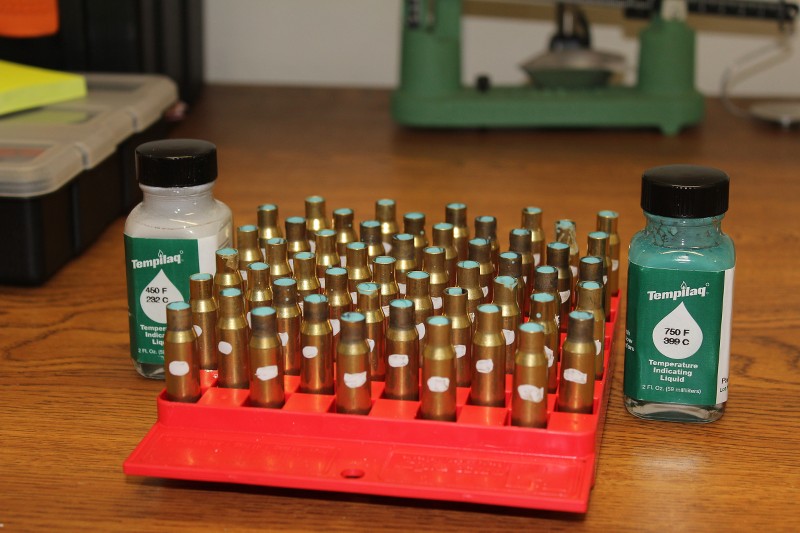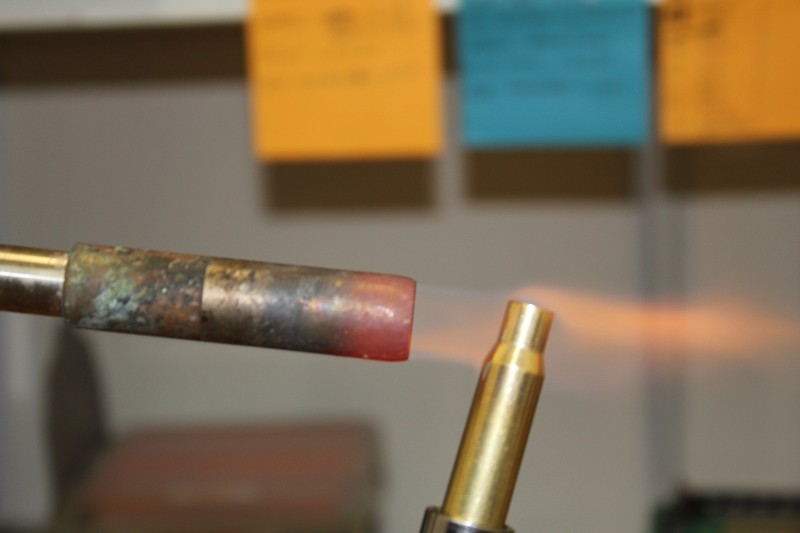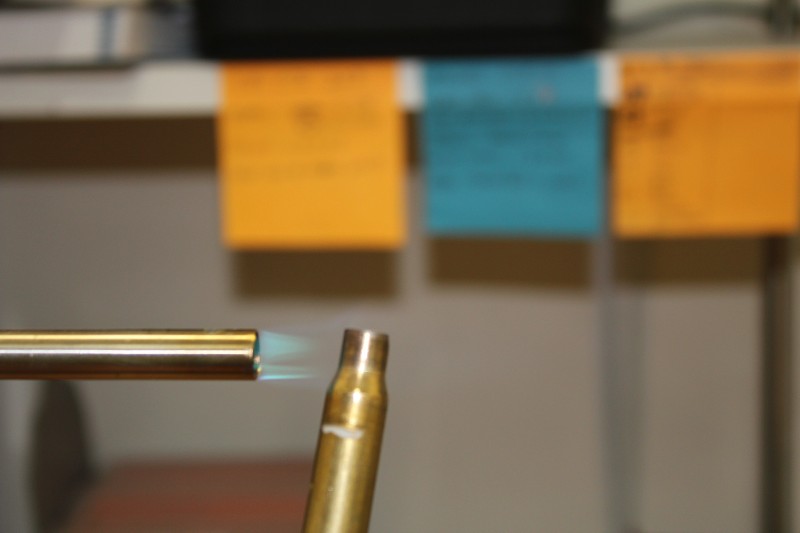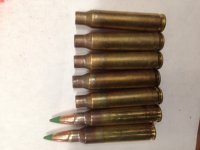JeepHammer
Moderator
Um, not to put too fine a point on things,
Micro chrystlline and mono chrystlline are two entirely different things.
Micro chrystlline is fracturing larger into smaller,
Mono is creating larger from smaller, making the metal much easier to crack.
Neither is good for brass.
Grain structure is specifically formulated & formed to be maximized in cartridge brass.
------
Since this was brought up,
Flipping magnetic current in the INDUCTOR creates magnetic 'Eddie Currents',
Magnetic polarity changing is what moves the metal (called 'Frequancy'),
Eddie currents maintain movement between polarity flips, the 'Zero Voltage' time between positive/zero/negative/zero/positive/zero/negative flip cycles.
This creates & expands 'North'/'South' flips in the magnetic field,
North/South/North/South, NO 'ZERO' in the middle.
Electrical polarity REQUIRES a Zero point before it can 'Flip' direction.
Magnetic fields are a useful byproduct of that electrical polarity reversal,
But magnetic fields can exist in both 'North' & 'South' at the same time creating what you commonly call 'Eddie Currents'.
Two opposite electrical currents CAN NOT exist in the same conductor,
While opposite magnetic fields co-exist in every ferrous metal,
That ferrous material doesn't become 'Magnitized' until the RANDOM micro magnetic compounds become 'Polarized' or aligned in the same direction,
Then you call it a 'Magnet'.
Can't have an 'Eddie Current' (although there is no current involved) at full magnetic field strength,
Eddie currents are formed as current is cut off, reaches zero, then forms a magnetic field with an opposite polarity.
'Eddie Current' (should be Magnetic Eddie) is a misnomer,
Just like DC negative is called a 'Ground' (shorthand for 'Earth Ground').
It's a misnomer,
There isn't any 'Current' in magnetic fields,
Magnetic fields 'Circulate' or they expand & contract....
If you want to get technical about magnetic fields, and show even more flaws electrical guys are taught about magnetism,
MOVING magnetic fields INDUCE (root word of 'Induction') electrical POTENTIAL.
Now, if that electrical POTENTIAL becomes an electrical 'Current' depends entirely on if the electrical POTENTIAL is in a completed circuit...
An electrical CURRENT moving through an electrical conductor creates a magnetic field. Period.
ANY moving current will create a magnetic field around the conductor.
In the case of electrical (magnetic) induction,
The circuit completes, creates a magnetic field around the conductor (annealing coil),
Then semi-conductor switching shuts the power off!
This creates an OPEN CIRCUIT, the magnetic field starts to collapse around the conductor...
When the semi-conductor (switching transistor) connects the power again, the polarity of the circuit is reversed (flipped),
The NEW rapidly expanding magnetic field 'Spins Off' the remainder of the magnetic field that is collapsing, creating what you are calling an 'Eddie Current', which is actually a magnetic 'Eddie' since magnetic fields have ZERO 'Electrical current component.
The Connected Circuit magnetic field yanks molicules one direction,
The magnetic field collapse (moving magnetic field) releases the force of the pull,
Magnetic Eddies vibrate the molicules during the 'Zero Voltage' cycle,
The electrical polarity reverses, the magnetic field builds (expanding, moving magnetic field) creating a heavy molecular pull in the opposite direction,
Then the process repeats with collapse, zero, building back in the first polarity, again creating magnetic eddies when the electrical polarity flips, building a magnetic field in the opposite polarity.
Polarity when referring to magnetic fields is a misnomer also.
We call magnetic poles 'North' & 'South' even though the 'North' doesn't point to true north.
Electrical current & magnetism are inseparable, can't have one without the other,
The single basic foundation of electrical function is the 'Electro-Magnetic Link',
Simply can't have electrical current without a magnetic field being formed...
You CAN have a magnetic field without an electrical current,
And yet the magnetic end of things is skipped right over in electrical education, mostly because they are being taught to build circuits, and often view the magnetic fields produced as an annoyance or problem,
Instead of treating the magnetic field as the root of about all electrical generation, and without mastering magnetic fields 'Electricity' is a parlor trick limited to static generators...
Micro chrystlline and mono chrystlline are two entirely different things.
Micro chrystlline is fracturing larger into smaller,
Mono is creating larger from smaller, making the metal much easier to crack.
Neither is good for brass.
Grain structure is specifically formulated & formed to be maximized in cartridge brass.
------
Since this was brought up,
Flipping magnetic current in the INDUCTOR creates magnetic 'Eddie Currents',
Magnetic polarity changing is what moves the metal (called 'Frequancy'),
Eddie currents maintain movement between polarity flips, the 'Zero Voltage' time between positive/zero/negative/zero/positive/zero/negative flip cycles.
This creates & expands 'North'/'South' flips in the magnetic field,
North/South/North/South, NO 'ZERO' in the middle.
Electrical polarity REQUIRES a Zero point before it can 'Flip' direction.
Magnetic fields are a useful byproduct of that electrical polarity reversal,
But magnetic fields can exist in both 'North' & 'South' at the same time creating what you commonly call 'Eddie Currents'.
Two opposite electrical currents CAN NOT exist in the same conductor,
While opposite magnetic fields co-exist in every ferrous metal,
That ferrous material doesn't become 'Magnitized' until the RANDOM micro magnetic compounds become 'Polarized' or aligned in the same direction,
Then you call it a 'Magnet'.
Can't have an 'Eddie Current' (although there is no current involved) at full magnetic field strength,
Eddie currents are formed as current is cut off, reaches zero, then forms a magnetic field with an opposite polarity.
'Eddie Current' (should be Magnetic Eddie) is a misnomer,
Just like DC negative is called a 'Ground' (shorthand for 'Earth Ground').
It's a misnomer,
There isn't any 'Current' in magnetic fields,
Magnetic fields 'Circulate' or they expand & contract....
If you want to get technical about magnetic fields, and show even more flaws electrical guys are taught about magnetism,
MOVING magnetic fields INDUCE (root word of 'Induction') electrical POTENTIAL.
Now, if that electrical POTENTIAL becomes an electrical 'Current' depends entirely on if the electrical POTENTIAL is in a completed circuit...
An electrical CURRENT moving through an electrical conductor creates a magnetic field. Period.
ANY moving current will create a magnetic field around the conductor.
In the case of electrical (magnetic) induction,
The circuit completes, creates a magnetic field around the conductor (annealing coil),
Then semi-conductor switching shuts the power off!
This creates an OPEN CIRCUIT, the magnetic field starts to collapse around the conductor...
When the semi-conductor (switching transistor) connects the power again, the polarity of the circuit is reversed (flipped),
The NEW rapidly expanding magnetic field 'Spins Off' the remainder of the magnetic field that is collapsing, creating what you are calling an 'Eddie Current', which is actually a magnetic 'Eddie' since magnetic fields have ZERO 'Electrical current component.
The Connected Circuit magnetic field yanks molicules one direction,
The magnetic field collapse (moving magnetic field) releases the force of the pull,
Magnetic Eddies vibrate the molicules during the 'Zero Voltage' cycle,
The electrical polarity reverses, the magnetic field builds (expanding, moving magnetic field) creating a heavy molecular pull in the opposite direction,
Then the process repeats with collapse, zero, building back in the first polarity, again creating magnetic eddies when the electrical polarity flips, building a magnetic field in the opposite polarity.
Polarity when referring to magnetic fields is a misnomer also.
We call magnetic poles 'North' & 'South' even though the 'North' doesn't point to true north.
Electrical current & magnetism are inseparable, can't have one without the other,
The single basic foundation of electrical function is the 'Electro-Magnetic Link',
Simply can't have electrical current without a magnetic field being formed...
You CAN have a magnetic field without an electrical current,
And yet the magnetic end of things is skipped right over in electrical education, mostly because they are being taught to build circuits, and often view the magnetic fields produced as an annoyance or problem,
Instead of treating the magnetic field as the root of about all electrical generation, and without mastering magnetic fields 'Electricity' is a parlor trick limited to static generators...




